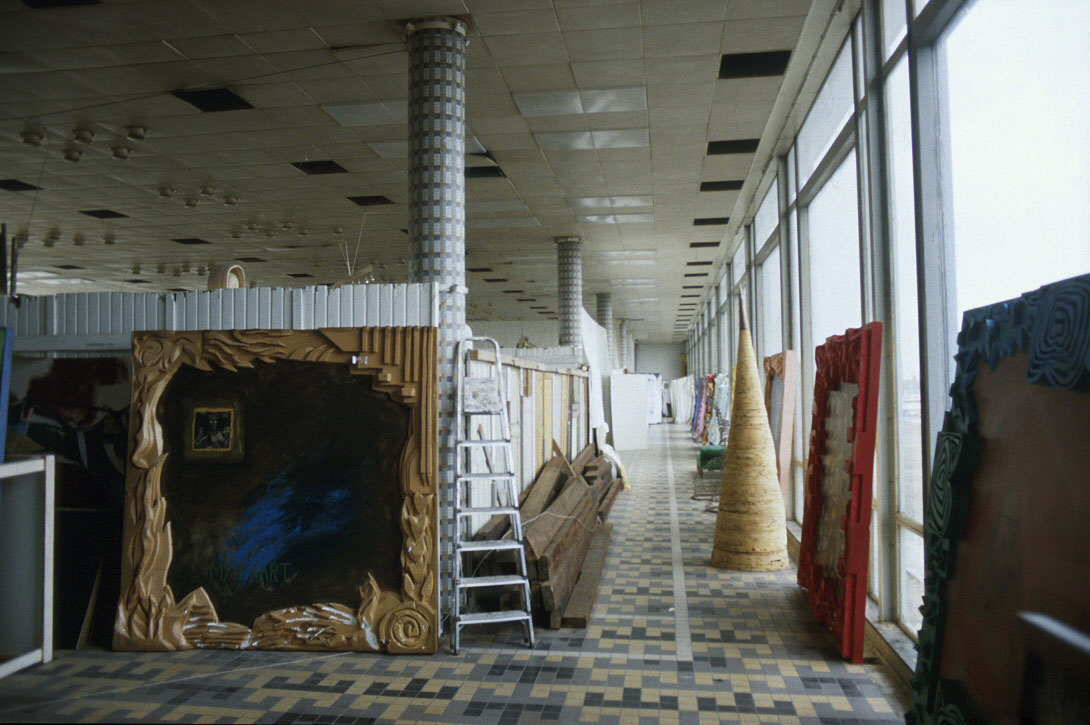
photo credit: David Carr-Smith
"The Interior, The Trace" has some interesting relationships drawn between furnishings and the space in which the furnishings are, as well as the people who dwell in these spaces. The line about movables (the furnishings) developing out of the immovables is an idea I grasped onto since the idea of movables as a response to the immovables is the basis of my question regarding aesthetics of squat culture.
The idea of fashionable furnishings also caught my attention. Selecting certain furnishing is a consumption of culture, but is it also production of culture? Especially in the squat culture, which (not to make claims before I actually do research myself) seems to have a diy philosophy, how is this idea of fashionable, and often functional, items produced by consumption? Also within this convolute was the concept of the dwelling as a receptacle of a person, and this shell bearing the impression of that person. I think this draws parallel with my focus on aesthetics as a reflection of the person (or in cases of squats as public venue, the "sub"culture." As mentioned in the convolute, to dwell is to form such shell... production, perhaps? ...I have yet to get my hands on that de certeau piece I should read.
Lastly, I would like to touch on the emergence of the private home which comes from the dissociation of the proprietor (of factory buildings.) To extrapolate, the aesthetics, and the process behind such aesthetics of a squatted space serves to dissociate the space from the previous use, or disuse, of the squatted space.
The idea of fashionable furnishings also caught my attention. Selecting certain furnishing is a consumption of culture, but is it also production of culture? Especially in the squat culture, which (not to make claims before I actually do research myself) seems to have a diy philosophy, how is this idea of fashionable, and often functional, items produced by consumption? Also within this convolute was the concept of the dwelling as a receptacle of a person, and this shell bearing the impression of that person. I think this draws parallel with my focus on aesthetics as a reflection of the person (or in cases of squats as public venue, the "sub"culture." As mentioned in the convolute, to dwell is to form such shell... production, perhaps? ...I have yet to get my hands on that de certeau piece I should read.
Lastly, I would like to touch on the emergence of the private home which comes from the dissociation of the proprietor (of factory buildings.) To extrapolate, the aesthetics, and the process behind such aesthetics of a squatted space serves to dissociate the space from the previous use, or disuse, of the squatted space.
-1-
The surprising opportunities and demands of the industrial sites challenge domestic conceptions and force their users to invent expedients unrestricted by mass-taste, ready-made products, or design-training. The results demonstrate a mode of design rare in our culture: a kind of accretive forming of an individual’s needs on all levels from the shape of their home-enclosure to the casual positioning of their coffee cup. In consequence such apartments display an extraordinary and characteristic beauty - a degree of integration and visual interrelation, a formal and functional unity of structure and use, a completeness and complexity of conception, necessarily beyond the scope of those designed for clients. Carr-Smith, David. Improvised Architecture in Amsterdam Industrial Squats & Collectives.
-2-
There is a drumstel, back-line of one bass amplifier, two jet ear amplifiers, a song installation with three microphones and then free canals still five. The space is in principle accessible for everyone music wants whom make and the idea active approach understands, but there is a guard list. Oefenruimtes, Binnenpret.
On a similar note...
-3-
Simple PII that you can easily recycle from the street. (300Mhz CPU) with minimum 64MB of RAM, random graphic, ethernet and sound cards. And, the most important, server. Since few months we’re using proper server BLAH BLAH. but you can also use any p4 computer with more then 1gig of RAM as we did before we recycled this beauty. Of course the number of thin clients can extend depending on capabilities of LTSP server. If you are interested how it works check http://www.ltsp.org or check how we did it in our cafe. Copyleft, Barcelona.
Once again, taking this equipment, computer stuff in this case, since it is a computer lab, to help define aesthetics and furnishings of this particular space. The mentions of recycled hints at a possible anti-consumerism ideology. The "BLAH BLAH" suggests the type of attitudes possibly associated with a "counter"-culture. The claim of beauty; a particular aesthetic appreciation? The invitation to check out how they did it is a pseudo-entrance.

No comments:
Post a Comment